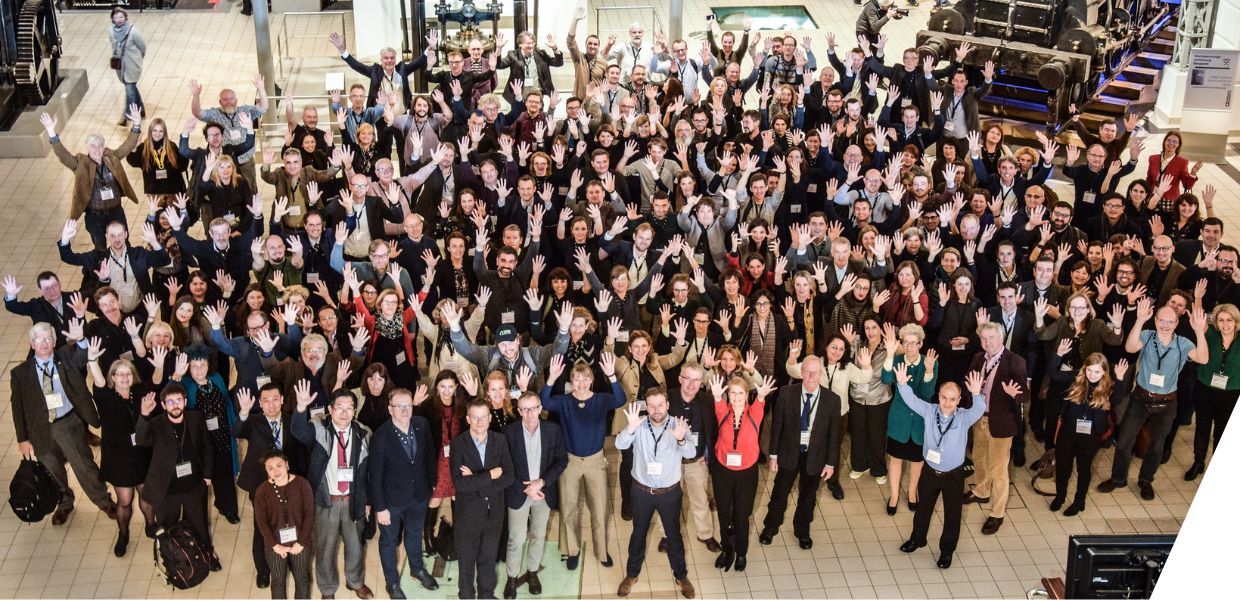Working at at the heart of the common European data space for cultural heritage
While the Europeana Initiative’s 15-year history counts many highlights, a recent one stands out: as of 2022, the Initiative is at the heart of the common European data space for cultural heritage, a flagship initiative of the European Commission to accelerate the digital transformation of Europe’s cultural sector.
Harry notes that this, ‘Is not a coincidence… at a conceptual level, the data space is built around the same principles and ideals that led to the creation of Europeana 15 years ago: openness, collaboration, and the conviction that digital cultural heritage is a public good that should be cherished and jointly owned.’
Marie-Véronique also sees the data space as building on Europeana’s achievements: ‘Its 15 years of experience has shown the ability of the Initiative to pioneer in the digital cultural heritage field which includes evolution, innovation and transformation from the technical perspective to the human one.’
Rob shares this feeling: ‘By developing a successful operating model and a sustained Europe-wide ecosystem for collecting and accessing digital cultural heritage, and building alongside this an interdisciplinary network of professionals and users, the Europeana Initiative has begun to show what can be achieved in the digital cultural heritage sphere.’
With the Europeana Initiative’s achievements as its foundation, all look forward to the opportunities the data space offers. Marie-Véronique hopes that it will be instrumental in, ‘Making a wider range of data available to citizens, fostering its reuse and supporting the digital transformation of the sector. These are opportunities that the Europeana Initiative is already embracing.’
Rob is excited for how, ‘a multilingual public data space can emerge for accessing, managing and comparing any available data concerning cultural heritage - and potentially other aspects of culture, supporting the needs of policymakers, educators, professionals, researchers and reusers alike.’
Harry is inspired by the emphasis which the data space will place on the principle of sovereignty: ‘This means that data owners - as opposed to platforms - will keep control of their data and what can be done with it. Supported by the technological set-up and data governance frameworks, data owners will be able to make their data shareable at source for other participants in the data space, for use in other data spaces, and beyond - in an identified and secure way. People will have control of their digital environment and will be able to participate more fully in its creation and use.’
Acknowledging the challenges
While the previous 15 years of the Europeana Initiative offer many highlights, and the coming 15 years many opportunities, there are also challenges. Harry notes that, ‘Europe - and the entire world - is undergoing rapid and system-wide changes, from a stark climate emergency to complex socio-economic and geopolitical challenges. For the digital heritage sector to stay relevant, we must take an active role in Europe’s triple transformation and its social, environmental and digital dimensions. ’
Challenges will include models of cooperation; as Harry says, ‘The success of the data space will largely depend on the contribution and engagement of cultural heritage institutions and professionals, as well as on the continued commitment by the European Commission and its Member States.’
In addition, ‘New technologies bring both challenges and opportunities,’ says Rob. ‘Artificial Intelligence is perhaps the most obvious current example. Europeana can help define and consolidate best practices on the use of such technologies within the cultural heritage sector, while helping to mitigate the investment risks.’
It’s a feeling shared by Marie-Véronique: ‘Developing a data space will require agility in managing data, and stronger connections will need to be made with new types of data like 3D models.’
To the next 15 years!
Where do Harry, Rob and Marie-Véronique hope the Europeana Initiative will be in 2038?
Rob says that, ‘By further bringing together the three pillars of the Europeana Initiative and by working more closely with our audiences, partners and networks I believe that a more harmonised and communicative environment can be developed for collecting, sharing, governing and using digital cultural heritage data and content.’
Marie-Véronique says, ‘I would love the Europeana initiative to go forward on the path of standardisation and interoperability and play the leading role in delivering and maintaining key components of the data space such as persistent identifiers and semantic enriched vocabularies for cultural heritage.’
Harry says, ‘My vision for the Europeana Initiative is one of collaborative work and collective action. By facilitating shared reflection, open dialogue and joint action, I hope we can contribute to a healthy digital environment - one which is based on values, has people at the centre and is powered by culture.’




